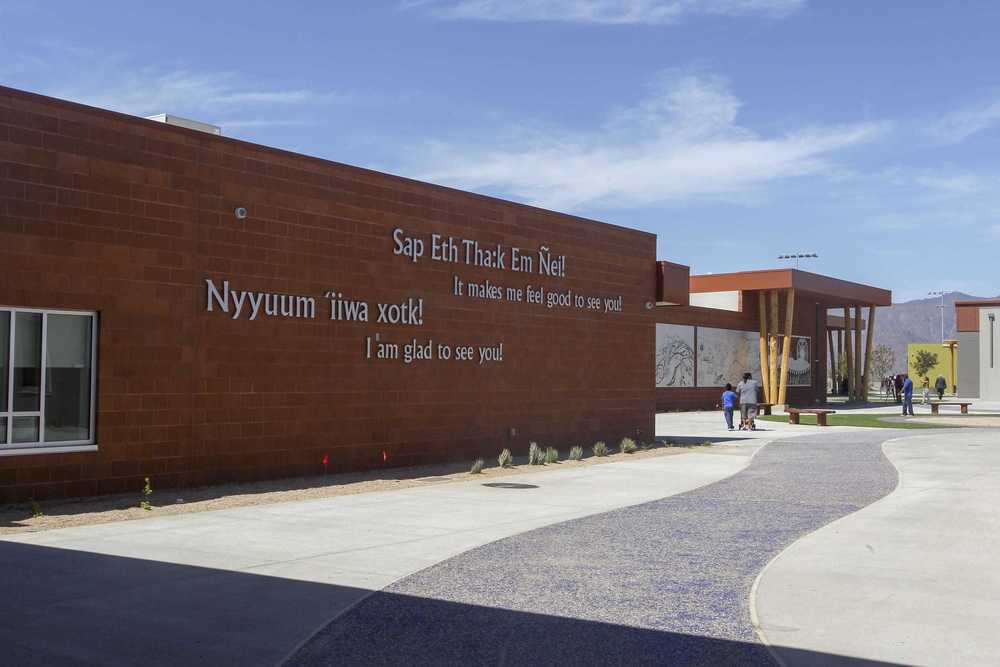
- Details
- By Levi Rickert
The Department of Interior’s year-long “Road to Healing Tour” will visit Arizona this week, with stops at the Gila River Indian Community near Phoenix this Friday and Navajo Nation at Many Farms on Sunday.
The tour is the second phase of the Federal Indian Boarding School Initiative that was launched in June 2021 by Interior Secretary Deb Haaland (Laguna Pueblo).
Haaland announced the Road the Healing Tour on May 11, 2022, in conjunction with the release of Volume 1 of the Federal Indian Boarding School Initiative. The report, penned by Assistant Secretary of the Interior - Indian Affairs Bryan Newland (Bay Mills Indian Community), recommended connecting with Indigenous communities and hearing about their experiences in Indian boarding schools directly.
The stops along the tour allow for survivors and descendants of those who attended Indian boarding schools to come and tell their Indian boarding schools experiences.
To date, the Interior has brought the tour to Native American communities in Oklahoma, Michigan and South Dakota.
The Arizona events will allow Interior officials, including Haaland and Newland, to listen to testimonies and gather additional information about boarding schools in the southwestern United States. During the first hour, media will be allowed and then dismissed so that those who don’t want to make testimony with the press present may do so.
 Make A Monthly Donation Here
Make A Monthly Donation Here
The location of the Gila River Indian Community event will be at Gila Crossing Community School, 4665 West Pecos Road, Laveen, Arizona, on Friday, January 20, 2023 at 10 a.m. - Mountain Time.
The location of the Navajo Nation event will be at Many Farms High School, N Highway 191, Many Farms, Arizona, on Sunday, January 22, 2023 at 10 a.m. - Mountain Time.
Trauma-informed support will be available on-site during the Arizona events.
More Stories Like This
50 Years of Self-Determination: How a Landmark Act Empowered Tribal Sovereignty and Transformed Federal-Tribal RelationsDenied Trip to Alcatraz, Leonard Peltier Tells Sunrise Gathering: “My Heart Is Full”
San Manuel Tribe Reclaims Ancestral Name, Faces Vandalism on Holiday
Minnesota Wild Makes History with First-ever Ojibwe-language NHL Broadcast
NCAI Demands Tribal Consultation Before Transfer of Native Education Programs
Help us tell the stories that could save Native languages and food traditions
At a critical moment for Indian Country, Native News Online is embarking on our most ambitious reporting project yet: "Cultivating Culture," a three-year investigation into two forces shaping Native community survival—food sovereignty and language revitalization.
The devastating impact of COVID-19 accelerated the loss of Native elders and with them, irreplaceable cultural knowledge. Yet across tribal communities, innovative leaders are fighting back, reclaiming traditional food systems and breathing new life into Native languages. These aren't just cultural preservation efforts—they're powerful pathways to community health, healing, and resilience.
Our dedicated reporting team will spend three years documenting these stories through on-the-ground reporting in 18 tribal communities, producing over 200 in-depth stories, 18 podcast episodes, and multimedia content that amplifies Indigenous voices. We'll show policymakers, funders, and allies how cultural restoration directly impacts physical and mental wellness while celebrating successful models of sovereignty and self-determination.
This isn't corporate media parachuting into Indian Country for a quick story. This is sustained, relationship-based journalism by Native reporters who understand these communities. It's "Warrior Journalism"—fearless reporting that serves the 5.5 million readers who depend on us for news that mainstream media often ignores.
We need your help right now. While we've secured partial funding, we're still $450,000 short of our three-year budget. Our immediate goal is $25,000 this month to keep this critical work moving forward—funding reporter salaries, travel to remote communities, photography, and the deep reporting these stories deserve.
Every dollar directly supports Indigenous journalists telling Indigenous stories. Whether it's $5 or $50, your contribution ensures these vital narratives of resilience, innovation, and hope don't disappear into silence.
 The stakes couldn't be higher. Native languages are being lost at an alarming rate. Food insecurity plagues many tribal communities. But solutions are emerging, and these stories need to be told.
The stakes couldn't be higher. Native languages are being lost at an alarming rate. Food insecurity plagues many tribal communities. But solutions are emerging, and these stories need to be told.
Support independent Native journalism. Fund the stories that matter.
Levi Rickert (Potawatomi), Editor & Publisher

